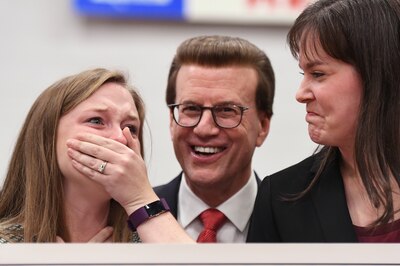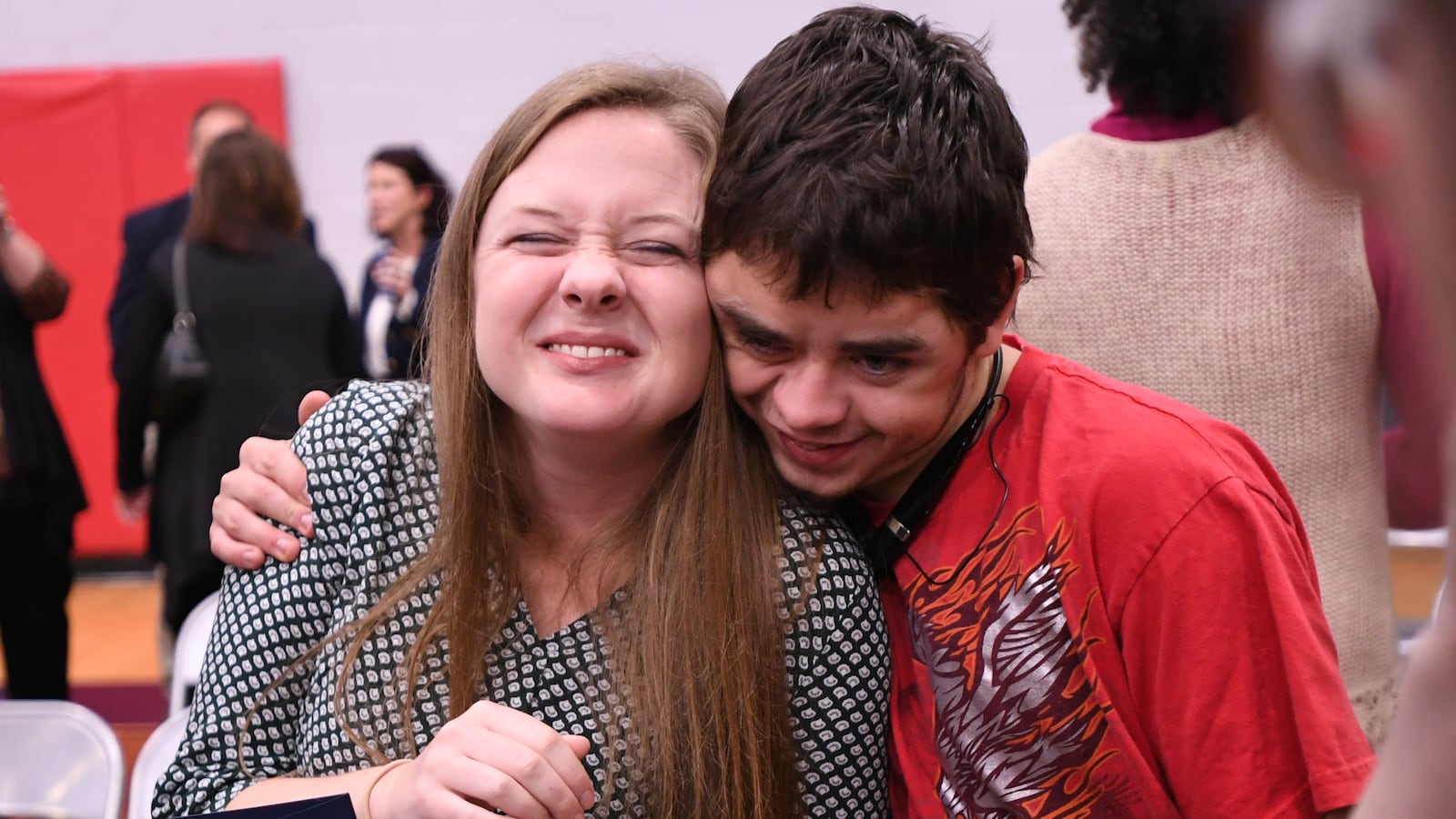How do teachers captivate their students? Here, in a feature we call How I Teach, we ask great educators how they approach their jobs. You can see other pieces in this series here.
Paula Franklin’s students describe her teaching style as “relaxingly engaging.”
Maybe that’s because she starts out by building relationships with her students, then begins to introduce the content in her Advanced Placement government class at West High School in Knoxville, Tennessee.
Since she took on the course, enrollment has doubled. And more than 80 percent of her students exceed the national average on their final AP test scores.
Her efforts haven’t gone unnoticed. Last year, Franklin was one of two Tennessee teachers chosen by the Milken Family Foundation for their prestigious national teaching award. The honor includes a no-strings-attached check for $25,000.
We spoke with Franklin about why she became a teacher, how she uses birthdays to build relationships with her students, and why campaign finance reform is her favorite lesson to teach. (Her answers have been lightly edited for clarity.).
Why did you become a teacher?
My high school AP Biology teacher, Mr. Wheatley, was my inspiration. He cared about his students as people first and whatever we learned about biology was secondary. As a result, I learned a lot of biology, and a tremendous amount about myself, for which I am forever grateful. I work every day to provide the same type of environment to my students. I try to teach them about themselves through the lens of civic education. I want my students to leave my class not only more confident in their knowledge of our government, but also as inquirers and risk-takers who are equipped to ask questions and find the answers.
How do you get to know your students and build relationships with them?
I spend the first two to three days of class using Kagan class-building strategies to get to know my students and to get them to know each other. I can always make up time for content later, but the time spent building a classroom culture at the beginning of the year can’t be made up.
Another of my favorite things is finding out my students’ birthdays to celebrate them with the class by asking them three questions: Are you going to drive? What do you consider to be your greatest accomplishment,? What do you hope to accomplish before your next birthday?
This allows me to spotlight my students and have them think critically about themselves and their goals. I have asked these same three questions for years, and students have started coming to me on their birthdays after they have left my class to share their accomplishments and goals.
What does your classroom look like?
I love to display student work in my classroom, both from my current and former students, so my walls are pretty well covered in posters and art. I think it’s important to make a classroom into a reflection of the students who learn there and goes a long way toward building community. I arrange the desks in small sections of rows so that I can easily get to all the students to provide support on a difficult concept or assignment or encouragement to stay on task.
Fill in the blank. I couldn’t teach without my __________. Why?

Google Drive! I am a huge reflector and save all of my lesson materials and reflections on my Drive. That way, I can easily access previous lessons and see how to best adapt them for my current students or the current social-political climate.
What is one of your favorite lessons to teach? How did you come up with the idea?
One of my favorite lessons to teach began as my absolute least favorite: Campaign finance reform. The first couple of years, it went terribly. Students didn’t come away with an understanding of campaign finance but were more confused than when we started.
I am big on incorporating technology in my classroom, but for this lesson, I have them write down the original limitations of campaign finance and then cross them off in a different color as we learn about repeals. The action of crossing an item off of the list and annotating with the case or law that repealed it really sticks with them. This lesson is one of my favorites because I get to teach a relatively small amount of content over a class period, students get to work in groups and really wrestle with the content, and they have the opportunity to share their understanding with the whole class.
How do you respond when a student doesn’t understand your lesson?
I try to figure out what it was about the lesson they did not understand. I can usually do this by reviewing data from a quiz or test or other assessment or just by asking them. I spend a lot of time in my class focusing on how to ask and answer questions to encourage my students to be advocates for their education both in and out of my classroom. After I figure out what I need to remediate with my classes, I do my best to come up with an example or analogy that is relevant to them. If that doesn’t work, then I ask a colleague how they teach that topic and try that. I am constantly looking for new and different ways to teach content that my students typically struggle with so that I am prepared to switch it up if my plan isn’t working.
What’s the best advice you ever received?
It is OK to leave it on your desk; it will still be there in the morning. You are not a bad teacher for needing time for yourself.


